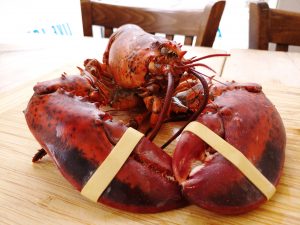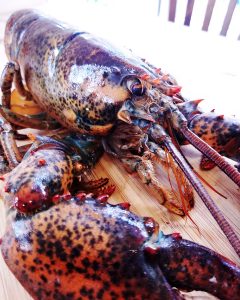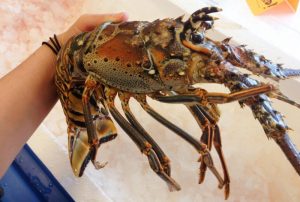From Trash to Treasure. The Great American Lobster History.
 Many of us know that Lobsters were once considered the poor man’s food. It was cheap and plentiful, and thus eaten by the poor, prisoners, servants, and even pigs or goats on farms. It wasn’t until the 1860’s, during the Civil War, when Lobster started to become more mainstream. Canning seafood, including cooked Lobster meat, became a viable option of doling out rations to soldiers. This made Lobster more accessible to people who were not near the shore, and over the years Lobster lost some stigma behind it.
Many of us know that Lobsters were once considered the poor man’s food. It was cheap and plentiful, and thus eaten by the poor, prisoners, servants, and even pigs or goats on farms. It wasn’t until the 1860’s, during the Civil War, when Lobster started to become more mainstream. Canning seafood, including cooked Lobster meat, became a viable option of doling out rations to soldiers. This made Lobster more accessible to people who were not near the shore, and over the years Lobster lost some stigma behind it.
But it wasn’t until the rise of train travel and tourism in the early 1900’s that Lobster boomed to popularity. Lobster was still relatively cheap and plentiful which made it a great option to serve on trains – it was also around this time when chefs realized Lobster tastes best when cooked live. From this point, people from all over, who have never tried Lobster, and never heard the negative connotations of Lobster, were able to try it for the first time – fresher, and properly prepared. The response was so positive that the wealthier Lobster tasters wanted live Maine Lobsters shipped into their own towns! Thus, Lobster became more expensive and therefore more luxurious.
This new delicacy of eating Lobster grew until the price rose so high that Lobster became aligned with the wealthy diet rather than the poor diet. In the mid-1900’s, scientists even looked into the aquaculture of Lobsters. However, this was unsuccessful, as Lobsters often attack each other in close and confined spaces.
Eventually, Americans sourced less expensive Lobsters from warmer waters. Lobster eaters began to eat both Cold Water and Warm Water Lobsters. Typically, Cold Water Lobsters come from the Atlantic, through Maine or Canada, and Warm Water Lobsters come from Florida, California, the Mediterranean, or the Caribbean. The main difference is that while both will have five sets of legs and two antennae, Cold Water Lobsters have claws and Warm Water Lobsters do not. Instead of Claws, Warm Water Lobsters have an extra set of antennae for navigation and “whip-like” protection. Without these claws, Warm Water Lobsters are often sold as “tails” because they have hardly any other meat. Interestingly enough, multiple factors affect the taste of the meat differently – Such as the temperature of the water and the anatomy of the Lobster – For example, Lobsters with claws are able to feast upon many things that Lobsters without cannot, therefore they have a different diet. me say that Cold Water Lobsters are sweeter, perhaps because of its diet of shellfish. But others really love how Warm Water Lobsters have fuller delicate, tasty meats, perhaps because warm waters might cause faster growth.
But whether it’s from warm waters or cold, Lobster has become deeply ingrained in America’s history. Happy Lobster Day!








